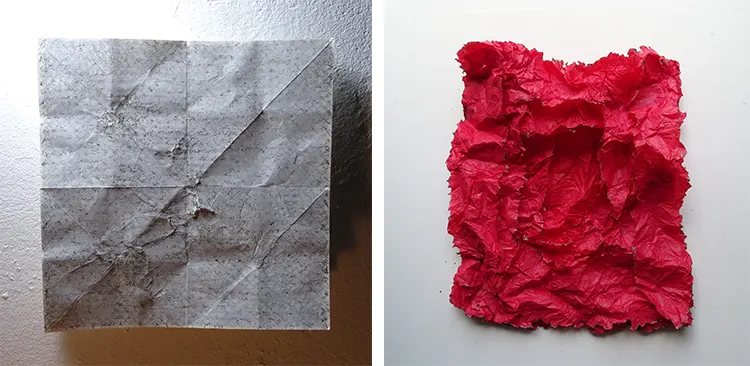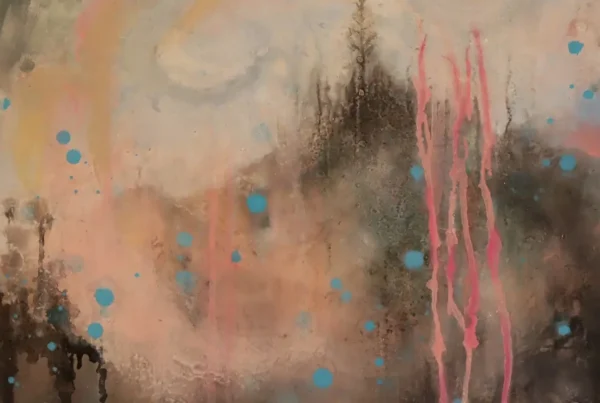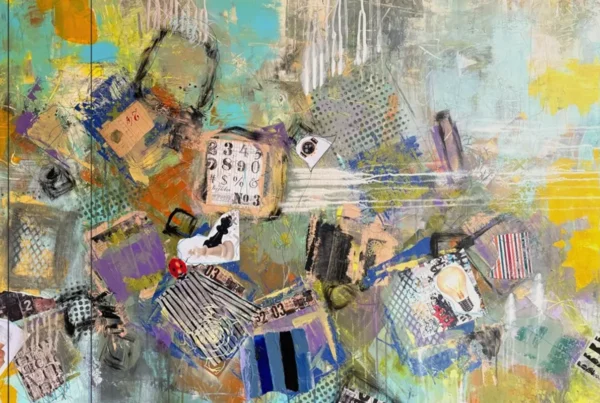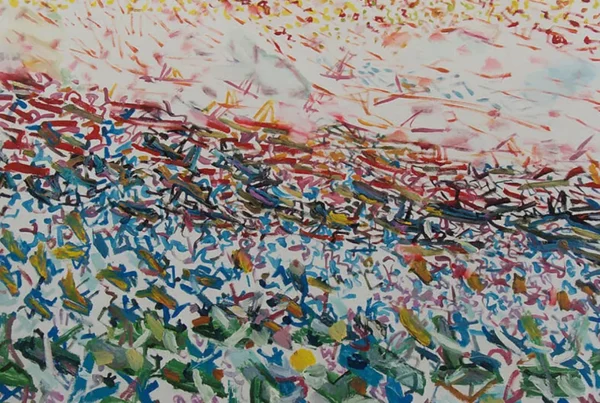“Creating art really helped me through my personal crises. I want to share this experience by becoming an art therapist.”
A Path to Healing: Embracing Art in the Face of Loss
Janna Ressel is an artist from Berlin, Germany, who grew up in Cologne. From her earliest years, she exhibited an unmistakable affinity for the visual arts, showcasing an enthusiasm for painting, drawing, and sculpting. Despite this artistic inclination, Ressel initially ventured into various other fields, pursuing diverse interests such as the study of Romanesque languages, the craft of cabinet-making, and the field of astrology.
In 1992, Ressel relocated to Berlin, a city steeped in history and culture. Here, she assumed multiple roles: a city guide, psychologist, psychotherapist, and, notably, motherhood. In the midst of these numerous responsibilities, her artistic pursuits receded into the background.
During the pandemic, she was unable to work as a city guide, which surprisingly turned out to be a blessing in disguise as it provided her with the time to reconnect with her artistic side. However, this period of personal rediscovery was overshadowed by a profound tragedy; the illness and subsequent loss of her husband to cancer. This overwhelming heartache prompted Ressel to seek solace in the act of creation, turning to art as a vital coping mechanism. The therapeutic nature of her artistic endeavors resonated deeply within her, prompting a significant shift in her career path.
Motivated by the transformative power of art in her own life, in the face of such a significant loss, Ressel resolved to become an art therapist. She was determined to harness the healing potential of the visual arts to help others navigate the complexities of the human experience.
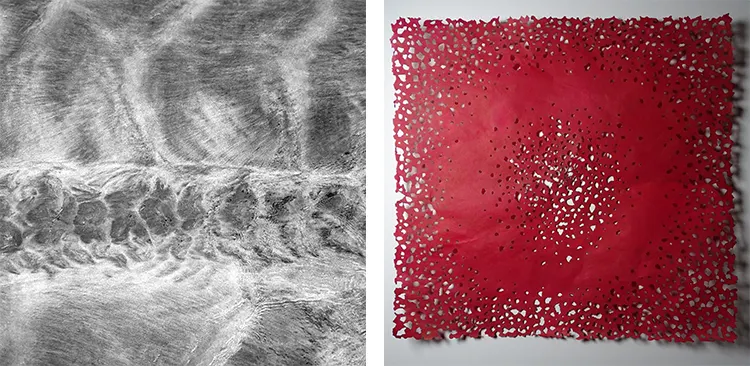
Versatility of Paper: Torn, Woven, and Sculpted
In her artistic oeuvre, Janna Ressel exhibits a predilection for the use of paper as her primary medium. This versatile material, when torn, woven, crumpled, or softened, can be shaped into three-dimensional forms reminiscent of human skin. Ressel employs techniques such as perforation, etching, scratching, and burning to create exquisitely detailed designs on the paper.
The artist is known for her small-format drawings, which are characterized by a restrained color palette dominated by shades of black, white, and red. Ressel’s distinctive approach involves the meticulous repetition of a single elemental shape, which over time develops and flourishes into an intricate, more expansive composition.
Ressel’s artistic interests extend to photography, in which she captures images of structures that may elude immediate recognition for their true nature. An example of this is her series of sand pictures that create the illusion of three-dimensional forms. In both her photographic and paper-based works, the themes that Ressel explores are profound and emotionally charged, encompassing absence, pain, death, destruction, grief, and resilience. Through her work, she eloquently conveys the depth of these experiences, inviting viewers to engage with these universal human themes.
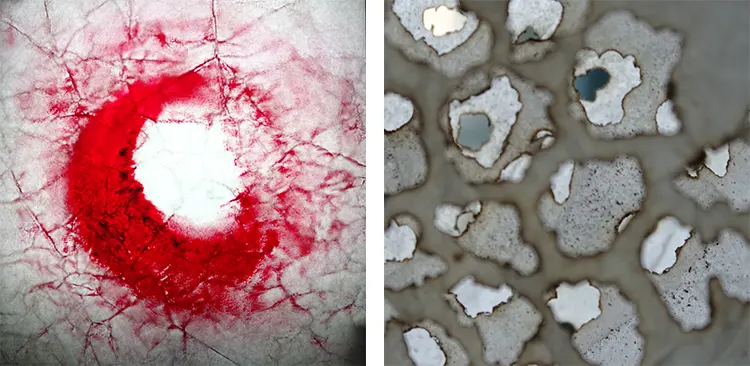
Artistic Influences and Intricacies of Ressel’s Workspace
The artwork of Janna Ressel is often described using evocative and haunting terms such as “missing,” “darkening,” “ephemeral,” “shadowed,” “hidden,” “obscured,” “opaque,” “transparency,” “frayed,” “torn,” “pain,” “death,” “destruction,” “grief,” “absence,” “make un/visible,” “un/covered,” “search picture,” “looking-glass,” “burnt,” “second thought,” “secret,” “biomorphic,” “reveal,” “conceal,” and “fragile.” These terms provide insight into the themes that Ressel explores in her work and reflect the complexity and depth of her artistic vision.
Ressel’s workspace is vital to her creative process. The studio is thoughtfully equipped with a wide range of tools, including black and white pens made from various materials, both high-quality and inexpensive papers, threads and needles, incense sticks, and cutters. Ressel takes great care in curating her work environment, as it contributes to the atmosphere and mindset necessary for her to create.
In terms of artistic influences, Ressel draws inspiration from both micro and macro photography of organic and inorganic materials. She finds beauty in the details of everyday life, as well as in the vast, intricate patterns found in nature and the world around her. These visual influences serve as a foundation for Ressel’s unique and thought-provoking artwork.
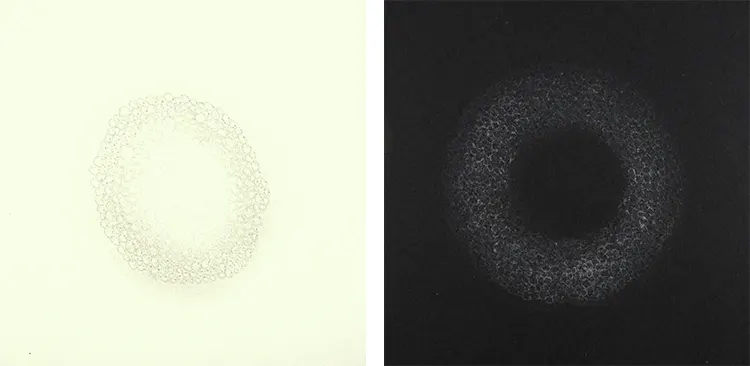
A Lifelong Connection: Ressel’s Affinity with Lotte Laserstein’s “Evening in Potsdam”
A particular artwork that holds profound significance for Janna Ressel is Lotte Laserstein’s “Evening in Potsdam.” Whenever Ressel encounters this piece in the New National Gallery in Berlin, she finds herself deeply affected by it. Created during the late 1920s, the painting captures an intimate gathering of friends at a rooftop dinner. The figures in the painting exude a complex interplay of emotions, encompassing both melancholy and sadness, as well as the reassuring warmth of long-lasting friendships. The artwork powerfully conveys a feeling of uncertainty about what the future may hold.
Ressel, as a largely self-taught artist, has explored a limited number of artistic mediums over the years. However, she confidently believes she has discovered the perfect fit in her current chosen mediums. At this stage in her life, Ressel is assured enough to present her artwork to a wider audience. Her journey to becoming an artist in her fifties was shaped by the many experiences she encountered throughout her life. She is deeply appreciative of every opportunity she has to express her creativity.
